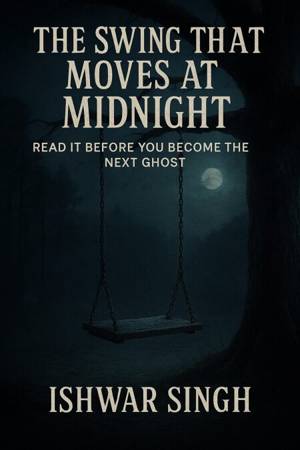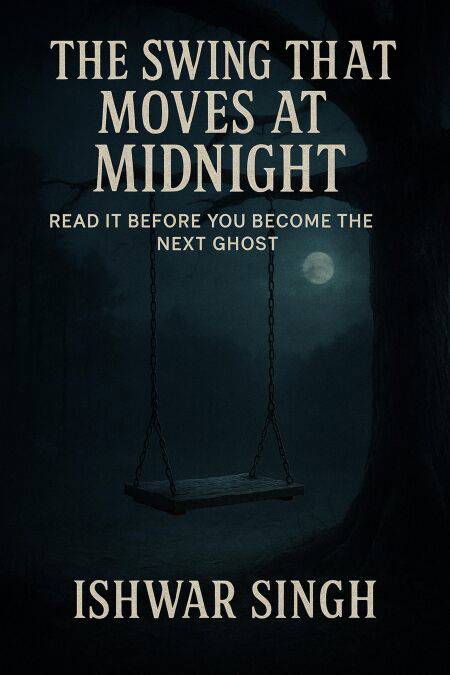
- Retrait en 2 heures
- Assortiment impressionnant
- Paiement sécurisé
- Toujours un magasin près de chez vous
- Retrait gratuit dans votre magasin Club
- 7.000.0000 titres dans notre catalogue
- Payer en toute sécurité
- Toujours un magasin près de chez vous
Description
There are places where the night arrives quietly, brushing over rooftops like a soft shadow. And then there are places where the night feels heavier—denser—where it sinks into the soil and clings to the air like something alive.
The old playground on the edge of Shantikunj Colony is one such place.
Locals cross the street before they reach its rusted gate. Children avoid its cracked slide and broken seesaw, and even the stray dogs refuse to sleep near the sandpit. Yet, what stands out the most is the swing—an ordinary wooden seat hanging from iron chains, weathered by years of neglect. It should be motionless, lifeless, forgotten.
But it isn't.
At the stroke of midnight, the swing begins to move on its own. Slowly at first, as though waking from a long, painful sleep. Then faster, driven by a force that has nothing to do with the wind. The chains creak like bones twisting. The shadows deepen. And the air turns colder than any winter night.
The Swing That Moves at Midnight is born from that legend.
This story explores the kind of haunting that does not come from grand mansions or ancient ruins, but from everyday places we trust. Places where children once laughed. Places meant to be safe. A playground swing is innocent until it isn't. Until it remembers. Until it demands attention.
What happens when something that should be still begins to move?
What happens when the past refuses to remain buried?
What happens when a single swing becomes the doorway between the living and the dead?
I invite you to enter the story—but with caution.
Not everything that moves in the darkness is alive.
Not every voice belongs to the living.
And if, on some silent night, you hear the faint creak of a swing outside your window…
do not look.
Spécifications
Parties prenantes
- Auteur(s) :
- Editeur:
Contenu
- Langue:
- Anglais
Caractéristiques
- EAN:
- 9798232997816
- Date de parution :
- 25-11-25
- Format:
- Ebook
- Protection digitale:
- /
- Format numérique:
- ePub

Seulement chez Librairie Club
Les avis
Nous publions uniquement les avis qui respectent les conditions requises. Consultez nos conditions pour les avis.








